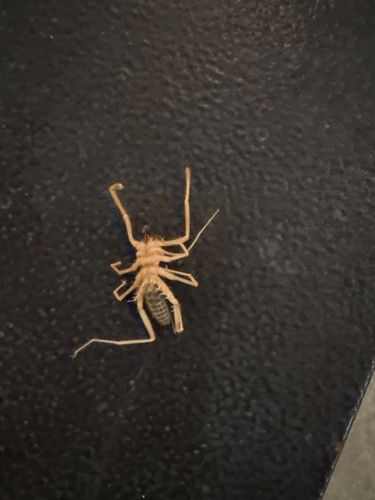Camel Spider, Sun Spider, Wind Scorpion
Scientific Name: Varies by species (e.g., Galeodes arabs, Ammotrechula itpallens for some common ones, but the image does not allow for species-level identification)
Order & Family: Order Solifugae
Size: Typically from a few millimeters up to 15 cm (6 inches) in body length, with legs extending further, though the one pictured appears to be on the smaller side of the range.

Natural Habitat
Arid and semi-arid regions worldwide, including deserts, scrublands, and grasslands. They often burrow in the soil or hide under rocks, logs, or debris.
Diet & Feeding
Mainly carnivorous, preying on various arthropods (insects, spiders, scorpions, millipedes) and other small animals like lizards and rodents. They are opportunistic feeders.
Behavior Patterns
Solifugae are typically nocturnal hunters, but some species are diurnal. They are very fast runners and use their chelicerae (jaws) to capture and dismember their prey. They are known for their aggressive appearance and rapid movements. They do not spin silk or have venom.
Risks & Benefits
Potential risks: While they are not venomous and their bite is not medically significant, their powerful jaws can deliver a painful bite if provoked, which may break the skin. Benefits: They are beneficial as natural pest control, preying on a variety of nuisance insects and other arthropods in their ecosystems.
Identified on: 8/10/2025